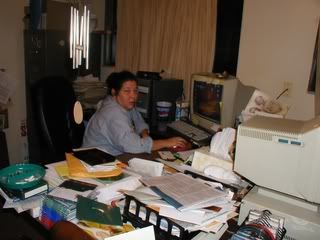5 Steps to Tighter Writing

So all of you writers have started writing your story, the "Great American Novel," or "My Life According to Me." You may have even completed the first draft. Congrats! You've done something many people who start a novel do not...complete a first draft. It's time to pat yourself on the back, party and celebrate, but not too much. The first draft is only your base line. More work is needed.
The second draft is waiting. Never consider your first draft a publishable work. It rarely is even if you made each line perfect before you went on to the next. You may have edited your story into so many versions you can't remember what the first version looked like...been there, done that...still doing that.
1. Take a look at your manuscript on the screen. If you used MS Word to write it, does it have those red or green squiggly lines on it? If so the grammar program you are using has found an exception in grammar (green) or misspellings (red). Correct those first. This is the easy step. The almost no-brainer thanks to computer programming.
2. Then comes the harder part. What I like to do is print off my novel chapter by chapter. Read each, and redline the daylights out of it. What am I looking for?
- You want to check for continuity. Not sure what that is? It means certain things stay the same from beginning to end...like hair and eye color, dialog is consistent with your character, etc.
- Take a look at all the words like "that," "to be or to (verb)," and endings like "-ing" and "ly." I circle these words in the text. They are the easy finds. Figure out how to replace these words and delete them. They are considered fluff words...they fill in spaces rather than you actively searching for more complex or descriptive words.
3. Make your changes onto your computer version and I print it out again. I use the back side of the previously printed chapter for this phase of the first draft editing. I draw a diagonal line through the old print so I can easily see which is the text I'm supposed to be reading. I'm a tactile type person, but cheap...I don't buy more paper unless I HAVE to. My friends working for Georgia Pulp and Paper may not agree with my tactics, but even money is made out of paper and I won't waste that either.
4. Read the story again. This time aloud... Word for word with colored pen in hand. I make tick marks where I stumble in reading. For me, having the pages in my hand is easier than doing this on the computer screen.
5. Cutting is not a fun thing to do...matter of fact, I hate it. But just doing these simple things, the writing flows better, it's tighter without additional words tripping you up. Now, look at the story while you are reading it. Does the action seem to bog down in places? You have a fast paced action scene and you fell back into retrospective, flashback, or back story...eight out of ten times this is the reason for lag in your story. Is there another way you could piece meal this in dialog discussion? Can you cut this out without affecting base the story? Is there any other way to present it? You get the idea. 
I've said before that my first novel was over 1,000 pages. By the time I followed these five steps, my novel was down to 800 pages. By the time I completed my third editing pass, I was down to 550 double spaced pages...respectable for a novel.
I'm off to the cliche pillow fight. What is a cliche pillow fight? It's when we read each other's excerpt and when we run across a cliche, the author gets hit with a pillow.Y'all Write On...







1 comment:
Useful pointers! I imagine that many writers finish their first or second drafts and pop them off in the mail thinking that they're done. Nothing is that easy.
Post a Comment